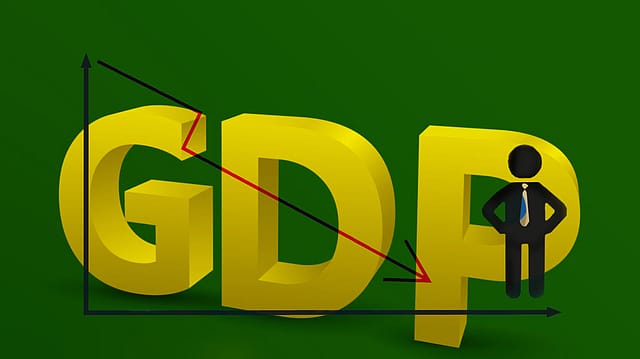India's FY24 nominal GDP growth could be lowest in 50 years: Motilal Oswal
ADVERTISEMENT

India’s nominal GDP growth in FY2023-24 could decelerate to the lowest level compared to any year between the early 1970s and 2018-19 (pre-Covid year), Motilal Oswal forecasts.
The broking firm estimates that after growing strongly for two consecutive years, India’s real GDP growth would decelerate to 5.2% year-on-year (YoY) in FY24, while nominal GDP growth would weaken even sharply to 7-7.5%, led by easing inflation.
The forecast of the firm is based on the expectation of a decline in real GDP growth due to a combination of factors such as a slower global economy, fading pent-up demand and normalising base effects. It also expects retail inflation print at just 4.3% and a mere 1% growth in the wholesale price index (WPI) in FY24.
“The GDP deflator could be about 2%, dragging down India’s nominal GDP growth to the lowest level compared to any year between the early 1970s and FY19 (i.e., half-a-century pre-COVID period). Such a slow growth rate would have some serious implications for the macroeconomy and financial markets,” Motilal Oswal’s investor note says.
January 2026
Netflix, which has been in India for a decade, has successfully struck a balance between high-class premium content and pricing that attracts a range of customers. Find out how the U.S. streaming giant evolved in India, plus an exclusive interview with CEO Ted Sarandos. Also read about the Best Investments for 2026, and how rising growth and easing inflation will come in handy for finance minister Nirmala Sitharaman as she prepares Budget 2026.
The broking firm also highlights the major implications of the deceleration of nominal GDP. Firstly, it highlights the revenue implication for listed companies as the revenue of listed companies is highly correlated with nominal GDP growth and WPI inflation. “In case of single-digit nominal GDP growth, corporate sales growth is also expected to weaken from an average of over 30% YoY in the past seven quarters to single digits in FY24,” the note says.
It points out that India's government debt surged from 71% of GDP in FY19 to 90% in FY21 and will most likely ease to 82.3% in FY23 (the increase in government debt is the sum of the primary deficit and the weighted excess of growth over (effective) interest rates).
“With nominal GDP growth expected to be 7.3% YoY in FY24 (vs ~15% in FY23 and 20% in FY22), it will be similar to the effective interest rate, pushing the government debt-to-GDP ratio higher to the extent of the primary deficit. Our calculations suggest that India's government debt could rise to 84.7% of GDP in FY24 and further to 85% in FY25,” the note says.
Motilal Oswal analysts also say that their calculations suggest India’s real exports declined by about 3% YoY in FY23 to $29 billion per month compared to $ 30 billion per month in FY22 as an increase in nominal exports was caused by high inflation.
“High Inflation has played a very important role in pushing India's nominal exports to an all-time high of $ 37 billion per month in the first eight months of FY23, compared to $ 35 billion per month in FY22 (and about $27 billion / month in the pre-COVID period),” the note said, adding that with an expected sharp moderation in global/local inflation in FY24, nominal exports is likely to stagnate in FY24. Since imports are expected to decline faster, India’s merchandise trade deficit could be lower in FY24.
The analysis also covers bank credit growth. Taking note of the correlation between nominal GDP growth and inflation, they said that bank credit growth, historically, has been 1.2x-1.3x of nominal GDP growth. “With an expectation of weaker nominal GDP growth in FY24, we estimate India's debt growth to also weaken. Thus, bank credit growth could also moderate from 15-16% in FY23 to 12% in FY24 with a downward bias,” it said.
The analysis suggests that overall, slower GDP growth could have serious implications for the macroeconomy, and many of them, are likely to play out over the next 12-18 months.
